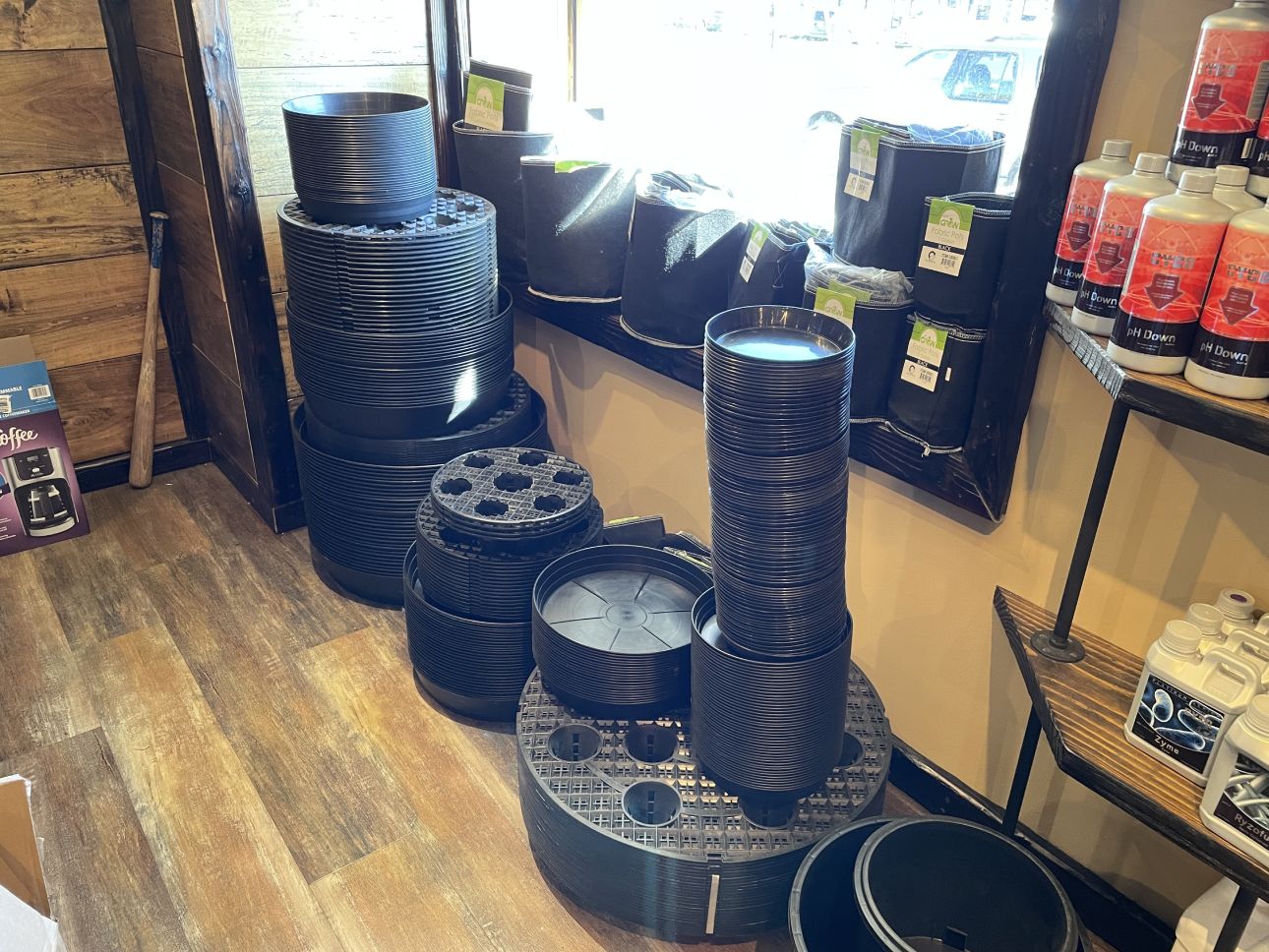Raise Your Gardening Video Game: Introduction The Indoor Earthworm Planting Process
Raise Your Gardening Video Game: Introduction The Indoor Earthworm Planting Process
Blog Article
Unlocking the Prospective of Hydroponics: Recognizing Its Makes Use Of and Various Types
Hydroponics, an approach of cultivating plants without dirt, has garnered raising attention for its potential to transform agriculture and gardening practices. The precision control over nutrient delivery, water use, and ecological elements supplies a glimpse into a future where food production can be optimized in numerous settings. As we navigate via the elaborate landscape of hydroponic systems and techniques, it comes to be apparent that each approach holds unique benefits and restrictions. By unwinding the diverse uses and sorts of hydroponics, we can discover a world of possibilities that might reshape exactly how we picture sustainable farming and horticulture techniques.
Advantages of Hydroponic Equipments

Another benefit of hydroponic systems is the ability to grow plants in a smaller sized space. By getting rid of the demand for soil, plants can be grown vertically or in piled systems, making the most of the usage of readily available space. This is specifically helpful in city areas or areas with limited arable land. Hydroponic systems decrease the risk of soil-borne conditions and pests, as there is no soil to nurture these risks. This brings about much healthier plants and decreases the need for hazardous pesticides, making hydroponic farming a more lasting and eco-friendly option.
Typical Utilizes in Agriculture

Offered the efficient water conservation and space-saving benefits of hydroponic systems, it is apparent that these innovative agricultural techniques have discovered typical usages in numerous markets of farming. The controlled setting of hydroponic systems enables year-round growing, offering a consistent supply of fresh produce regardless of outside climate conditions.
Hydroponics is generally used for expanding a range of plants, including leafed environment-friendlies, tomatoes, cucumbers, peppers, strawberries, and natural herbs. Its convenience encompasses upright farming, urban farming, and greenhouse production. Additionally, hydroponic systems are used in study and educational setups to examine plant growing, nourishment, and growth techniques. The flexibility and effectiveness of hydroponics make it a valuable tool in modern-day farming, resolving the challenges of sustainability, food safety, and source optimization.
Checking Out Various Hydroponic Techniques
What are the different ingenious strategies made use of in hydroponics to improve plant farming performance and produce? Hydroponic systems supply a variety of techniques that provide to different plant types and farming objectives. One popular technique is the Deep Water Society (DWC) system, where plant roots are immersed in a nutrient service, supplying adequate oxygen and nutrients. One more commonly made use of approach is the Nutrient Film Technique (NFT), which includes a superficial stream of nutrient solution flowing over the plant origins, advertising water and nutrient uptake. Furthermore, the Ups and downs system, additionally known as the Flood and Drain system, intermittently floodings the plant origins with nutrient service, permitting oxygenation during draining durations. Aeroponics is one more sophisticated technique that involves misting plant origins with a nutrient service, optimizing oxygen absorption and nutrient uptake. Each of visit here these methods showcases the adaptability and efficiency of hydroponic systems in boosting crop development and yield.
Contrasting Various Hydroponic Equipments
Checking out the effectiveness and return enhancement techniques in hydroponics leads us to compare different hydroponic systems available for plant farming. Each hydroponic system has its one-of-a-kind features, benefits, and limitations, making it crucial for farmers to select one of the most suitable system based on their details requirements and constraints.
One of the most typical hydroponic systems is the nutrient movie technique (NFT), where a slim film of nutrient solution continually moves over the plant origins. In comparison, the deep water society (DWC) system submerges plant roots straight right into the nutrient service, supplying adequate oxygen and nutrients.
An additional popular hydroponic system is the ebb and circulation (or flooding and drainpipe) system, which occasionally floodings the plant origins with nutrient remedy before draining it. my company This cyclic process ensures appropriate oygenation for the roots while delivering nutrients effectively. Additionally, the aeroponic system puts on hold plant roots airborne and hazes them with a nutrient solution, advertising fast growth and high oxygenation levels. Cultivators seeking a functional system that reduces water usage usually select aeroponics. By comprehending the differences between these hydroponic systems, farmers can make educated choices to optimize plant return and top quality.
Technologies in Hydroponic Technology
With advancements in hydroponic technology, the agricultural sector is witnessing a change towards much more efficient and sustainable cultivation methods. Advancements in hydroponic technology are transforming the way plants are expanded by making the most of returns, conserving sources, and lowering ecological influence. One vital innovation is the advancement of smart hydroponic systems that utilize sensors and automation to keep an eye on and change environmental problems such as pH degrees, nutrient concentrations, and light direct exposure in real-time. These systems allow accurate control over growing problems, resulting in optimal plant development and greater plant returns.
One more remarkable improvement is the assimilation of upright farming strategies with hydroponic systems, enabling the farming of plants in stacked layers. This upright method optimizes area use, making it excellent for metropolitan settings where land availability is restricted - The Indoor Earthworm. Additionally, using advanced LED lighting systems customized to specific plant requirements has actually enhanced power efficiency and enhanced growth rates in hydroponic arrangements
Technologies like these are driving the advancement of hydroponics, making it a lasting and highly eye-catching choice for contemporary farming.
Final Thought
To conclude, hydroponics uses many advantages in agriculture and has various techniques and systems that can be utilized to maximize its possibility. Technologies in hydroponic modern technology continue to improve performance visit this web-site and sustainability in food manufacturing. By recognizing the usages and various types of hydroponic systems, cultivators and farmers can open the complete capacity of this innovative method of expanding plants without dirt.
Furthermore, hydroponic systems enable for far better control over nutrient levels, pH equilibrium, and environmental problems, leading to much healthier plants and higher yields.

Report this page